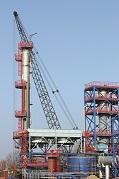
 During the last five years, I have worked on site selection projects in many industries ranging from food processing to aerospace. While that may seem like good news for the future of manufacturing in the U.S., the downside has been that the percentage of my clients who decide to invest to build or renovate a facility is below my career average. Investing in a new facility is a bet on the future and if there are nerves about the future, that investment is easy to postpone, and there have been many reasons to be nervous the last five years from the initial uncertainty of the depth and length of the Great Recession in 2008-9 to a slowing Eurozone economy and conflict in Ukraine and the Middle East today. Sometimes there are industry-specific factors; e.g., two years ago defense-related companies were uncertain because of the looming budget sequester. Some industries, such as printing, faced declining markets and overcapacity. Overall, confidence in the economy, what economist John Maynard Keynes called “animal spirits,” has been subdued. Economic news has been stronger recently; GDP is growing more strongly and unemployment is declining; but will companies increase investment in new bricks and mortar?
During the last five years, I have worked on site selection projects in many industries ranging from food processing to aerospace. While that may seem like good news for the future of manufacturing in the U.S., the downside has been that the percentage of my clients who decide to invest to build or renovate a facility is below my career average. Investing in a new facility is a bet on the future and if there are nerves about the future, that investment is easy to postpone, and there have been many reasons to be nervous the last five years from the initial uncertainty of the depth and length of the Great Recession in 2008-9 to a slowing Eurozone economy and conflict in Ukraine and the Middle East today. Sometimes there are industry-specific factors; e.g., two years ago defense-related companies were uncertain because of the looming budget sequester. Some industries, such as printing, faced declining markets and overcapacity. Overall, confidence in the economy, what economist John Maynard Keynes called “animal spirits,” has been subdued. Economic news has been stronger recently; GDP is growing more strongly and unemployment is declining; but will companies increase investment in new bricks and mortar?
Statistics show U.S. companies sitting on record amounts of cash and borrowing costs are low, but investing in new capacity has been weak. Writing in the Wall Street Journal in September, James Haggerty reported that “domestic capital spending has remained anemic by historical standards, especially in manufacturing.” Instead of investing in industrial equipment, companies are spending on stock buybacks and acquisitions. He cited a Morgan Stanley study in the story, saying that the 3.0 percent growth of all types of capital spending in the U.S. in 2013 was below its long-term average of 8.0 percent, and they expect that 2014 (3.8 percent) and 2015 (5.3 percent) will continue below average.
New capital and facility spending generally comes last in economic recovery; first companies add hours for existing workers, then they add workers, perhaps adding shifts; only at the end of the process do they add facilities and capacity.
The Federal Reserve Board reported in early 2014 that total industrial production only “returned to its pre-recession peak in the fourth quarter of 2013.” Manufacturing production (total production also includes industries such as mining) was still 3.0 percent below its pre-recession peak as of February 2014.
Companies are investing in capacity. Manufacturing capacity after falling each year between 2008-2010 as companies closed unneeded plants, grew by about 2.0 percent in both 2012 and 2013 and was expected to grow “somewhat faster” in 2014. Yet total industrial capacity utilization (the percentage of capacity being used), though growing, has been low by historical standards, reaching 78.4 percent for total industry in 2013; below its long-run average (1972-2013) average of 80.1 percent. Capacity utilization in manufacturing at 76.4 percent was 2.3 percent below its long-run average.
Obviously, there are exceptions to the total statistics. Regions producing or transporting shale gas and oil generally are enjoying rising investment by suppliers and downstream users. The Fed reports that durable and high-tech manufacturing production is above its pre-recession levels; machinery, computer equipment and electronic products, transportation equipment and miscellaneous manufacturing are all above 2007 levels. Production and capacity utilization have been weaker in non-durable industries generally.
Industrial production and capacity utilization have been increasing the last few years, finally reaching pre-recession levels in some. Uncertainty always remains as do challenges such as infrastructure capacity and potential skill shortages, but hopefully we are at the point in the cycle where continued economic growth, reshoring, lower energy costs especially compared with Europe, favorable financing and other factors induce companies to more broadly invest, expand capacity and grow.

